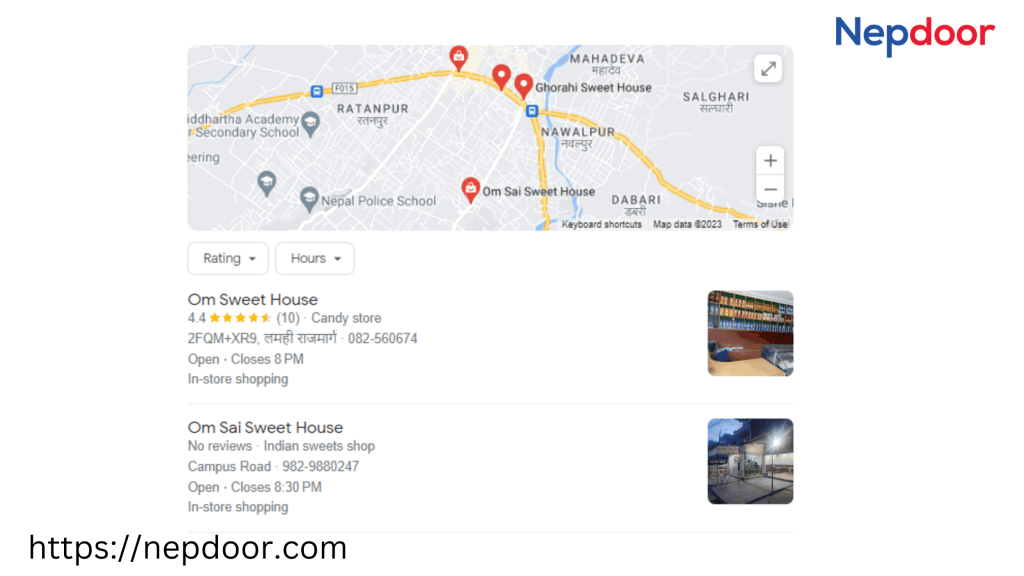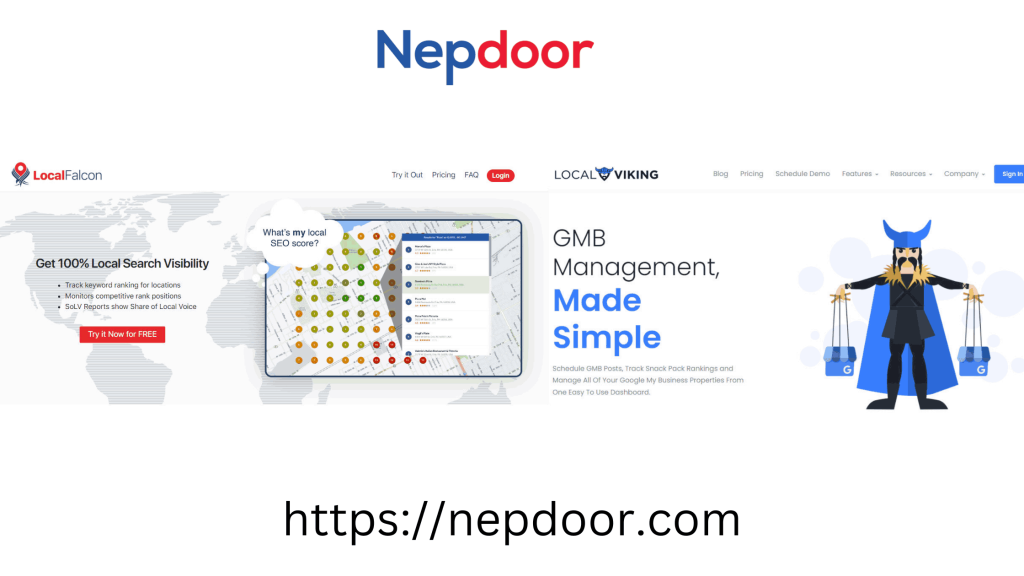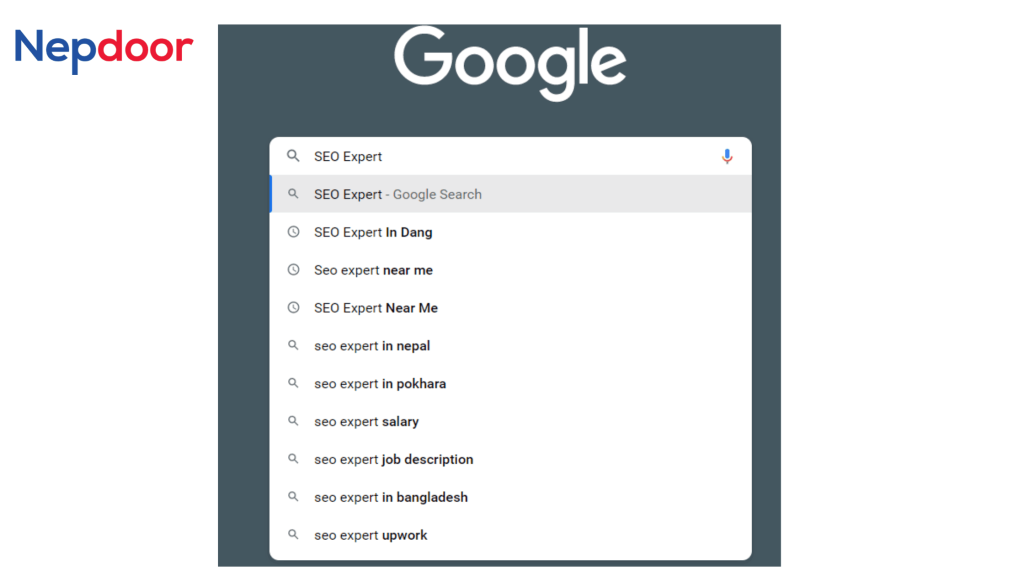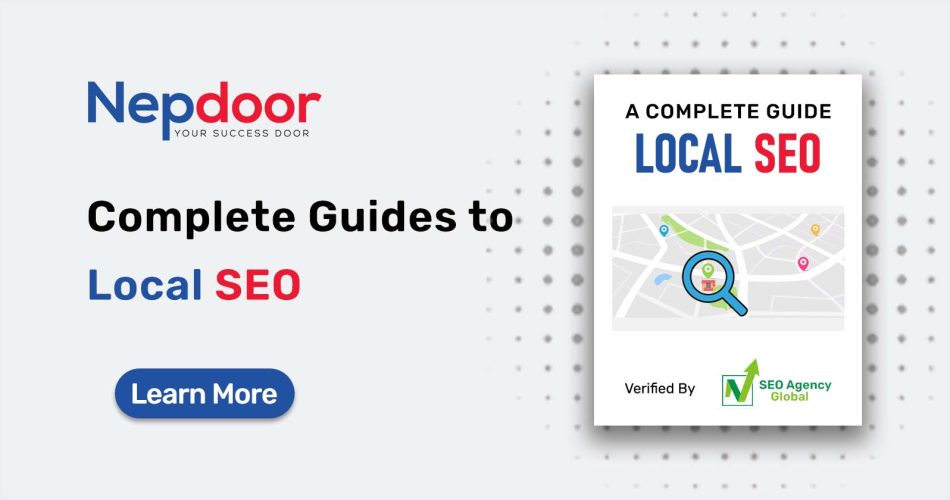Welcome to the ultimate local SEO guide for 2023. In this guide, you’ll discover:
- Practical tips to rank in the coveted 3-pack on Google Maps
- Why NAP (Name, Address, Phone number) citations are important for local SEO, and how to create them for your business
- How to set up and optimize your Google My Business (GMB) profile for better online visibility
- Plus, many more insights, tips, and techniques to boost your local SEO and drive traffic to your business.
Whether you’re a small business owner or a digital marketer, this guide is for you. Let’s dive in and take your local SEO to the next level.
Chapter 1: Basics on Local SEO
We’ll cover the basics of Local SEO in this chapter. First, we’ll share fascinating data on why local businesses need SEO and then, I’ll explain The Map Pack and how to track your rankings. Let’s dive in and learn about the fundamentals of local SEO.
What is Local SEO?
Local SEO is all about enhancing a website’s visibility and generating more leads and brand recognition through local searches. It involves optimizing Google My Business profile, identifying local keywords, and creating “NAP” citations.
Why is Local SEO Important?
I don’t want to overwhelm you with a bunch of numbers and statistics, but I’d like to share a few interesting facts to emphasize just how important SEO is for local businesses.
Did you know that almost half of all searches on Google have a “local intent”? That means that people are actively looking for businesses or services in their area.
Furthermore, nearly 30% of Google’s search engine results pages (SERPs) contain a “local pack” in the results. It is a collection of businesses that are located near the searcher’s location and are relevant to their search.
A whopping 76% of people who search for something local on their phone end up visiting a store that same day.
All of this data demonstrates just how crucial it is for local businesses to optimize their SEO strategies. If you can successfully get your business in front of these local searchers, there’s a high chance that they’ll walk through your door and become customers.
How does Local SEO Work
Local SEO is similar to regular Google searches. When someone searches for something, Google looks through its database to provide the best results for that query.
What makes Local SEO different is that it uses a specific set of ranking factors to determine the order of the local search results. These factors include:
- The searcher’s location
- NAP citations
- Presence of a Google My Business listing
- Keywords used in the Google My Business profile
- The sentiment of online reviews
- Keywords used in online reviews
- Number of check-ins at the location
- Shares on social media
- Google Maps star rating for the business
Chapter 2: The Map Pack
We will discuss The Map Pack in this Chapter, one of the most important aspects of local SEO. In this chapter, You will learn the following:
- How Google’s Local Map Pack operates
- Techniques for monitoring your Map Pack rankings
- Useful tools for local SEO
- Tips for ranking on Google organic for local keywords
If you’re interested in gaining a comprehensive understanding of The Map Pack, then you’ll definitely find this chapter beneficial.
Intro to The Map Pack
The Map Pack, which is also referred to as “The Local Pack,” is a group of three local business results that appear at the top of Google search results with a map showing the locations of the businesses.
For instance, if you search for “Sweet Shop” on Google, you will see The Map Pack displayed at the very top of the search results, with the regular search results displayed below it.

Later in this guide, I will explain how Google ranks businesses in The Map Pack. It’s essential to note that The Map Pack has its own algorithm with specific rules, and some ranking factors that are crucial for ranking in The Map Pack may not be as important for ranking in local and traditional organic results.
One crucial thing to keep in mind is that Google does not only display local results for keywords that include a specific city or state. If Google thinks your search requires local results, it will show you The Map Pack, even if the keyword is not evidently local. For example, when I recently searched for “plumber” in my area, Google displayed The Map Pack.

This is an important consideration when conducting keyword research for your local business. While you want to optimize for “sweet shop + city” keywords, in many cases, the generic “sweet” keyword without a location may receive more search volume than the “sweet shop + city” version.
How to track Map Pack Ranking
To begin a local SEO campaign, assess your current position by checking your rankings in The Map Pack and monitoring them over time. Remember that location is important in local SEO and results can vary by location, so consider using tools like Bright Local or Local Viking for detailed Map tracking.

With Local Falcon, enter your business name and chosen keyword, select your desired rank tracking specificity, and view your rankings and an interactive map of your position throughout the city. Use this tool to identify areas where you should be ranking well, but aren’t, and investigate competitors’ listings to understand their physical location and potentially improve your ranking.
Local Organic Ranking
As a local business, it’s crucial to be visible on The Map Pack, but don’t forget about regular search results too. These can also attract customers who are ready to make a purchase. Although The Map Pack appears first on Google, regular search results are also significant because they appear consistently across all searches. To make sure your website shows up in regular search results, incorporate relevant keywords in your website’s title and other important areas that search engines look at.

It’s also important to monitor your website’s ranking for a variety of keywords, not just the obvious ones like “store + city.” Let’s take an example if you’re an SEO Expert, you want your website to show up when people search for “SEO Expert” or “SEO Expert Near Me.” By using a tool that allows you to track your website’s ranking in different locations, you can see how well you’re doing in various areas. This gives you a better understanding of your overall performance.
Chapter 3: Local Keyword Research
I’ll demonstrate how to locate keywords for local SEO in this chapter. Fortunately, conducting local SEO keyword research only takes a single step. You typically don’t need to continually find new keywords, unlike with a blog.
That is not to say that keywords are not significant for local searches. They most definitely are. But in the majority of cases, all you need to get started is a short list of keywords that people use to find your local business.
Google Suggest
Local searches can benefit from using Google Suggest as well. The only thing to bear in mind is that potential local customers must look for the term in the local search.
For example, when you search “SEO Expert” you will get the following results:

Google ideas for “SEO Expert” search. These keywords aren’t particularly well suited for local SEO outside of “near me.”
Local Voice Searches
Google reports that one in five searches on their platform done through mobile devices are voice searches. The key contrast between voice searches and keyword searches is that voice queries are generally lengthier and use more natural language.
Unfortunately, there don’t seem to be any tools available yet to help you discover keywords specifically for voice searches. However, it’s certainly worth bearing in mind as you navigate this process.
Google Keyword Planner
With Google Keyword Planner, you may learn about search volume for specific areas.
It is very helpful if you already have a large number of keywords and want to pick the best keyword among them.
If you’re searching for fresh and new keywords, use their “Start With a Website” option.
Chapter 4: Local SEO Ranking Factors
It’s time to examine how Google’s local SEO algorithm actually functions. I’m going to briefly go through the key elements that Google uses to rank sites for local searches. And a few pointers on how to cater to them.
Let’s start now.
Google My Business Profile
The website for your small local business is still vital. Your Map Pack rankings are influenced by the content on your website and the links leading to it. But, your GMB profile must be flawless if you want your company to be first in The Map Pack.
NAPs Huge
Citations with NAP (Name, Address, and Phone number) are another important local SEO ranking factor. Your name, address, and phone number are all recorded in NAP citations.
Why is this crucial?
NAPs are used by Google to verify that all of your business’s information is accurate. Also, the more frequently consumers encounter NAP citations for your company, the more certain they are that the location and phone number you provided are accurate. This is why you need as many credible websites as you can to cite you consistently in NAP.
Online Reviews
According to a study on local ranking variables, “Review Signals” were significant. You may suffer specifically from unfavorable comments on your GMB profile. And that Google likely also makes use of reviews from independent websites (like Yelp). So, yes, getting good reviews can be helpful, and getting bad ones can be detrimental.
So, responding to reviews, even unfavorable ones can aid your local SEO efforts.
Apply Normal SEO
For local searches, all of Google’s standard ranking variables still apply. In reality, Google has acknowledged that your local rankings are influenced by your performance in the organic SERPs:
Local search optimization follows SEO best practices because your position in search engine results is very important. from Google. That means, Your position in The Map Pack will increase in direct proportion to your position in the organic results.
For local SEO rankings, content creation, page optimization, and link development are still essential especially for industries that are competitive.
Chapter 5: Google My Business
Optimizing your Google My Business profile is now necessary. Claim your business listing in Google, as I explained in the last chapter if you want to rank in the local results. Thus this chapter is for you if you want to get the most out of your GMB.
Keep Everything Consistent
Consistency is crucial when it comes to GMB. In addition to your website, all your NAP citations on other websites should match your GMB entries.
When Google finds that your company’s information is consistent across your GMB, website, and third-party review sites like Yelp, they determine that your company is legitimate. And everything about them locally lines up.
Your local business must update its information as soon as possible if its name, address, or phone number changes. But, if your local business has one address listed in their GMB and another on the website, that raises a massive red flag to Google. And that also applies to listings in regional business directories.
Furthermore, I recommend that you type your company’s address the same way everywhere it appears, including on your GMB profile.
Fill Everything You Can
Your profile’s completeness is graded by Google. However, based on my experience, this score is VERY forgiving. Only by covering the fundamentals, you can achieve a really good score.
As a result, I’d start with their rating. Yet, you will likely need to go above and beyond if you want to rank for difficult keywords.
Category selection is the major mistake I observe people making. Google will compel you to select a top-level category that adequately characterizes your enterprise.
Also, the category you choose must correspond to one that they currently have (you cannot create your own category). Having said that, a lot of individuals overlook secondary categories. These auxiliary categories have a direct impact on the keywords and searches for your company. I also advise filling out the “Services” and “Products” tabs while you’re there:
This information explains to Google what products or services your company truly offers. So, it’s crucial to complete this information.
Keep Your Needed Data Updated
Verify again that your company’s opening times, holidays, and other essential business information are all correct and up to date. Rankings may not be directly affected by this kind of activity.
But, if a customer in a hurry arrives at your company only to see a “Closed” sign, you might anticipate a negative review. So, you want it to be automatic that any changes to opening hours are likewise made in Google My Business.
Get More Reviews
Reviews are one of Google’s top local ranking signals, as I mentioned in Chapter 4. You obviously want to earn as many favorable evaluations as you can.
I Strongly advise responding to every single review, regardless of whether it is favorable, unfavorable, or somewhere in between. It demonstrates your concern for potential consumers as well as Google.
There are two considerations to bear in mind about reviews:
- You must make it VERY easy for consumers to leave reviews.
- One of the greatest ways to accomplish both is to ask them to do so (most satisfied customers won’t without a little nudging).
Chapter 6: On-site Local SEO for Businesses
I’ll go over a few strategies in this brief chapter on how local businesses can maximize their on-site SEO efforts.
So after you’ve used the conventional on-page SEO techniques to optimize your title tags and body material, it’s time to use these techniques created especially for websites of local small businesses.
Write Unique Content
Most likely, you already know that every page on your website needs to include entirely original content. As a result, you want the material on each page to be entirely distinct if your company provides services to both Boston and Brookline.
Yet you might be surprised to learn that you can develop these kinds of landing sites for places where you don’t actually have a physical presence as long as you don’t use identical content.
Obviously, doing this won’t raise your Map Pack ranking. Yet, there are many distinct local keywords for which you may absolutely rank in the local organic results. And the traffic will convert nicely as long as you cater to the locals.
Use of Schema for Local SEO
Schema markup is more of a “nice to have” in terms of local SEO.
Nonetheless, there is a whole category of Schema markup for regional companies. For instance, you can mark up your address and phone number using this Schema.
I don’t believe Google heavily depends on Schema for Map Pack ranks (after all, they have all of this data already in your GMB). But there’s nothing wrong with using the “LocalBusiness” markup on your site if you’re sure you can do it right.
Review markup is one kind of Schema that can unquestionably be useful. Similar to other SERPs, review stars can transform a dull result into a catchy Rich Snippet.
Use Title Cliffhangers
Here, the goal is to begin your title tag with a declarative, benefit-driven phrase. Then, ensure that the claim exceeds Google’s title tag limit (currently 500-600 pixels or 60 characters). This cutoff produces an open loop that can result in further clicks.
Chapter 7: NAP Citations
It’s time to move on to NAP citations, one of the trickiest aspects of local SEO. Like backlinks, NAP citations are extremely difficult to build. but also quite significant. Also, I’ll demonstrate to you how to properly generate local citations in this chapter.
NAP Audit
All of your company’s NAP data should be the same across your website, your GMB profile, local listings, and anywhere else your company is mentioned online.
There are numerous citation-related tools and services available. I endorse Loganix and WhiteSpark. But as I mentioned, there are a lot of solutions available.
The following are the most crucial items you must have before beginning, regardless of the tool or service you use:
- The business’s most recent and current NAP.
- Earlier NAP information (that way, you can find and update outdated citations).
Correct Incorrect NAP
You may anticipate a LOT of citations that need to be fixed or updated for older firms that haven’t conducted an audit before. The next step is to update as many NAP citations as you can after you have a list of those that need to be updated.
According to my observations, faulty NAPs can be divided into two groups:
- Citations that you can edit (for example, your NAP on Yelp).
- Someone else must edit the citations (for example, a mention on a local resource page).
Find Citations Opportunities
In my opinion, local websites offer you the best chances for citations. Local citations are extremely pertinent citations that can significantly improve your Map Pack rankings. Also, your outreach conversion rate will typically be absurdly high because you are contacting local residents.
Competitors NAP
You can use the same techniques you use for NAP audits to spy on your rivals. With just their NAP information, you may receive a complete list of all the web mentions of them. This strategy, in my experience, performs better than Link Intersect. With a citation tool, the outcomes don’t always need to include a link to the website of your rival to appear.
Unit8: Link Building
Almost all link-building techniques that are effective for non-local websites also work for local services when it comes to building local links. Local businesses have a ton of unique backlink opportunities that non-local sites can’t take advantage of because they are also closely connected to a particular city or state.
Moreover, I’ll go through a few effective local link-building techniques in this chapter, Chapter 8.
Other Local Businesses
Most local businesses have connections to other companies in the local areas. Although you’ll undoubtedly eventually need to engage in cold email outreach, I suggest beginning by obtaining links from people you already know.
So I advise listing each:
- Distributors \Supplier
- Wholesaler Contractor Nearby company that you are connected to in any way.
- Then, find a page on their website where linking to you makes sense.
Sponsor Local Events
It’s important to recognize that the majority of local events require sponsorships to succeed.
Do You Want More Traffic To Your Websites? Click Here and get 15 min Free Consultation.
By sponsoring a local event, you can often benefit from a valuable link to your website on the event’s official page. It’s worth noting that your support doesn’t have to be solely monetary – there may be other ways you can offer your help and get involved.
Your Local Chamber of Commerce
One of the simplest links you’ll ever receive is from the Chamber of Commerce in your community. The Chamber determines how you are listed. Some demand a yearly charge. Some require you to renew your membership each year.
In either case, these connections are usually well worth the hassle because they are so pertinent. Also, your link nearly always comes with a NAP.
Chapter9: Advanced Local SEO Tips and Strategies
Let’s wrap up this article with a number of sophisticated local SEO strategies, suggestions, and techniques. None of these strategies will take the place of traditional NAP development or GMB optimization. Yet, they can help you gain a small rating boost.
Embed a Google Map on Your Page
If you want to show Google where your business is located, there’s an easy trick to make it happen.
Simply locate your business on Google Maps, then click the small dropdown menu located in the upper left-hand corner of the screen. From there, select “Share or embed map” and copy the given embed code.
Once you’ve obtained the code, you can embed the map on your website’s contact or directions page. This will help emphasize to Google the exact location of your business.
Use Your Location Focused Keywords
In my experience, implementing this simple tip can significantly improve your local organic search rankings.
To start, ensure that your main local-focused keyword appears at the very top of your page in a prominent headline. It’s also recommended that you wrap this title in an H1 tag.
It’s important to note that while this tactic can improve user experience signals, it may not directly impact on-page SEO.
When someone in your area lands on your page, they want to know that you provide services in their specific location within seconds. If they don’t see that clear local focus in your headline, they may quickly leave your site and look for a business that caters specifically to their city or region.
The Title Tag Double Dip
Despite being an old-school SEO approach, optimizing your homepage title tag remains an effective tactic for local businesses.
To get started, focus on optimizing your homepage title tag using 2-3 keywords that are relevant to your business and location. This tactic works particularly well for local businesses because they typically receive very few links to their internal pages.
From my analysis of the link profiles of various local sites, I’ve found that over 90% of backlinks usually point to their homepage. This highlights the importance of maximizing the value of your homepage by optimizing it around a range of related keywords.
Optimize Meta Descriptions for Local Searchers
You may be surprised to learn that writing a compelling description can improve the number of clicks your website receives. Use Google Ads as inspiration to write an engaging description. You can use some of their terms in your own description to increase your chances of receiving clicks because they employ copy that has been proven to be effective.
Conclusion
Each business that wishes to draw clients from locals must implement a local SEO strategy. In order to increase your exposure in local search results, you must optimize your website, online listings, and other digital assets.
We’ve explored a variety of strategies and recommended practices in this article for enhancing your local SEO. There are various actions you can do to improve your local search rankings and draw in more clients, from claiming your Google My Business listing to optimizing your website content and constructing high-quality local backlinks.
By putting the advice we’ve given into practice and frequently monitoring your performance in local search results, you can establish a strong online presence in your neighborhood and reach more customers than you ever imagined. You can build a strong foundation for your company that will support your success and long-term growth by doing local SEO in the proper way.





Comments